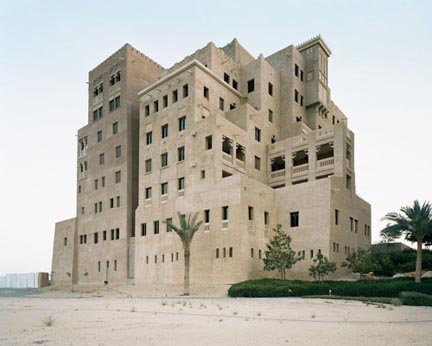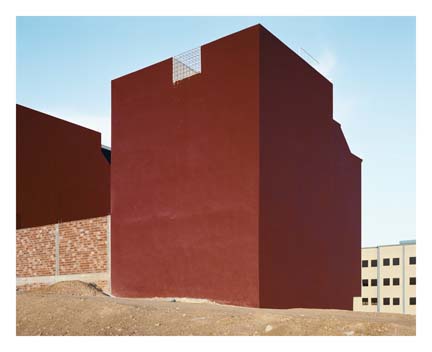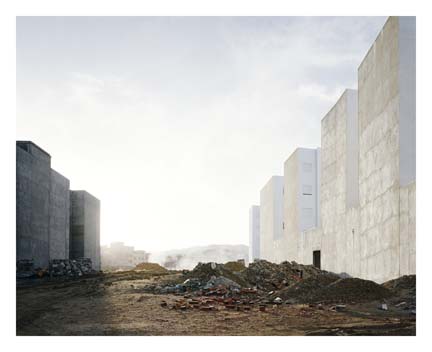About the Photographer
Princen, Bas
Dutch, b. 1975
Bas Princen's ongoing photographic series Utopian Debris depicts places that are reminiscent of avant-garde, “utopian†architecture projects. Princen's interest lies in engaging various ideas about architecture and landscape, however, and not in representing particular iconic buildings or historic moments. Trained as an architect and an urban planner, Princen approaches photography as a means to "construct" space rather than as an recording device to document reality. In making a photograph Princen uses the camera to emphasize certain elements at a given site while consciously excluding others, in order to create new relationships between the buildings and the immediate world around them. Compared with how they would appear on location, his images deliberately, but subtly, alter the way we see these particular landscapes.
The settings where Princen photographs, such as the "ring roads" at the edges of growing cities, are often removed from the common centers of human life, as if examining the outer ripples of the history of modern architecture. Although the titles of his pictures indicate where they were taken — locations ranging from northern Morocco to Los Angeles and Houston, Texas — the images have an otherworldly or mythical quality. As Princen observes, his photographs are imbued with a certain strangeness that stems from "the inability to place the objects and scenes in a context one knows." He continues, "It is normally not the object that is strange, but how, and where, and why it stands in a particular relation to its surroundings." Princen's technical choices, such as camera position and the time of day he chooses to shoot, play a significant role in creating a gentle sense of disorientation and an atmosphere of mystery. In the image Ring Road Houston (2005), for instance, Princen portrays a monumental gold office tower beside an empty parking lot, framed against a dull grey sky, but he makes the architecture enigmatically disappear. The reflections in the building's mirrored facades are perfectly aligned with the horizon so that they continue seamlessly into the highway and buildings behind it, complicating any sense of depth.
As Princen describes, Utopian Debris started as an assortment of disparate photographs and has grown organically: "After a while, a series starts to appear in which one feels the connections, rather than a rational understanding of them…I endlessly try to fill in the gaps, I search for the missing links, and the existing photos tell me what I should look for in a new image." In this way a loose set of internal relationships develops. A central idea in many of Princen's photographs is the ambiguity between construction and destruction, and his images often make it difficult to determine if one is looking at modern ruins or new buildings. This theme begins to suggest a larger human struggle to shape the world, both preceding and informing the practice of architecture. In the image Ring Road Findeq-Cueta (2007), for example, piles of dirt and rubble are flanked by rows of clean white concrete towers, embodying both a primeval ruggedness and a vision of architectural order — the utopian ideal.
Bas Princen graduated from the Design Academy of Eindhoven in 1998, and the Berlage Institute in 1999. He lives in Rotterdam, the Netherlands.
(1) Quoted in Mark Plimott, "Utopian Debris: a conversation with Bas Princen," Oase, no. 76, (January, 2007).
(2) Ibid.



